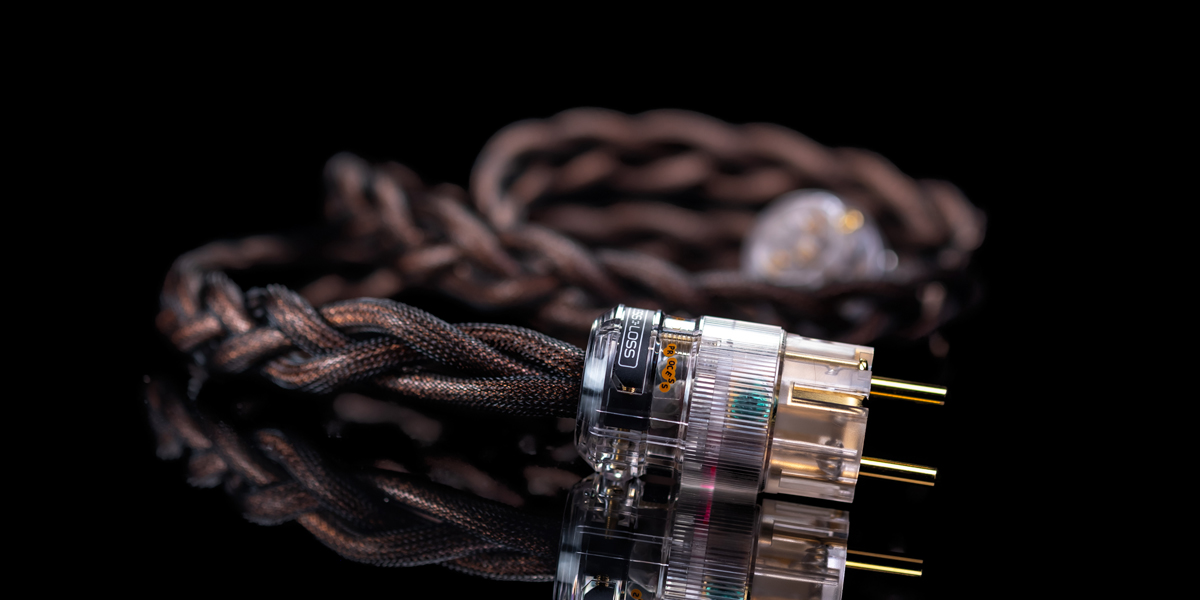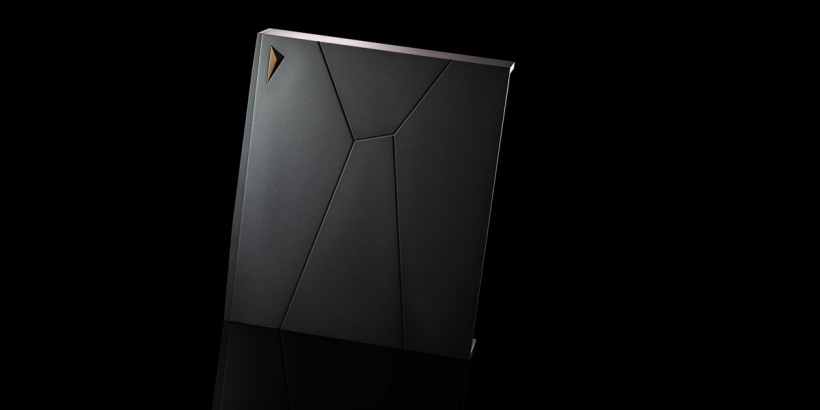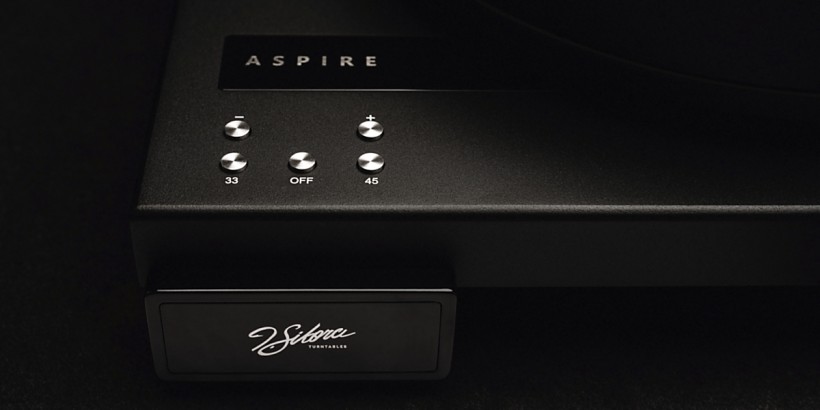LessLoss C-MARC Stellar is the Lithuanian manufacturer’s latest power cord, based on the most advanced version of its signature noise-rejecting wiring. There was only one way to find out how it fares against other LessLoss power cables I’ve been using for years. Enjoy!
The star
Even though I regularly review LessLoss products, I could never know in advance that there’d always be more to come. It’s been like that ever since our first rodeo in 2018. The most recent LessLoss story published here at HifiKnights dates several weeks back. Its subject in the form of the latest Firewall incarnate caters to the headfi audience and packs sixteen specialist signal conditioners, which are one of the company’s most important developments to date. Their intricate C-MARC skin-filtering technology is the other. This story is all about its latest version. The package with the Firewall kit for cans also stored the new power cord named C-MARC Stellar. Srajan already did his part on the subject here. Now it’s my turn.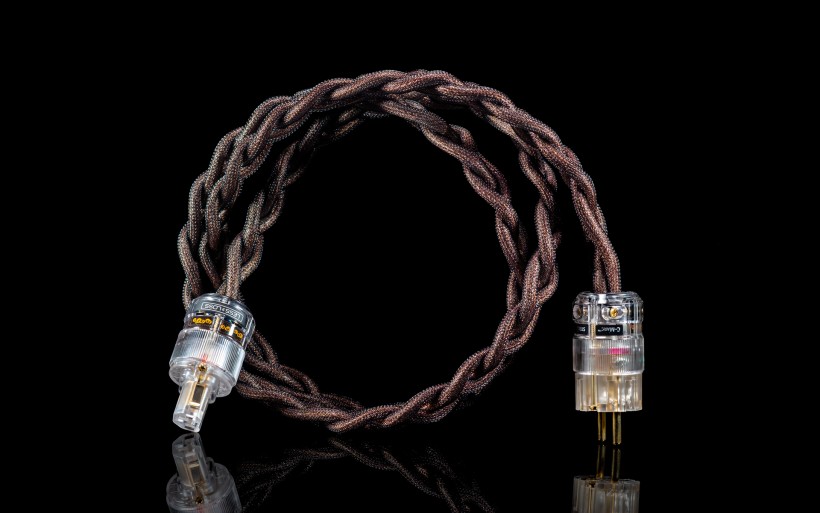 The LessLoss Common-mode Auto-rejecting cable aka C-MARC had its debut in 2017, when it replaced the company’s previous wiring named DFPC (Dynamic Filtering Power Cables). Both were designed to strip contamination from signal and make it quieter in the process. The latter proved more effective and for lesser coin, which is a rather rare occurrence in the audio biz. The core of the C-MARC principle is in its unique geometry based on two counter-polarized, then fractally replicated coils of the same diameter and step; one turned clockwise and its equivalent twisted in the opposite direction. They superimpose mutually to form a bucking-coil connection originally developed in the 1930s’ and aptly named humbucker. Most importantly, noise induced on these strands is electrically cancelled due to their opposite polarity and geometry, which results in high S/N ratio across the entire cable’s length. C-MARC wiring comprises hundreds of balanced 0.125mm-thick individually enameled conductive hairs, so it falls into the Litz category.
The LessLoss Common-mode Auto-rejecting cable aka C-MARC had its debut in 2017, when it replaced the company’s previous wiring named DFPC (Dynamic Filtering Power Cables). Both were designed to strip contamination from signal and make it quieter in the process. The latter proved more effective and for lesser coin, which is a rather rare occurrence in the audio biz. The core of the C-MARC principle is in its unique geometry based on two counter-polarized, then fractally replicated coils of the same diameter and step; one turned clockwise and its equivalent twisted in the opposite direction. They superimpose mutually to form a bucking-coil connection originally developed in the 1930s’ and aptly named humbucker. Most importantly, noise induced on these strands is electrically cancelled due to their opposite polarity and geometry, which results in high S/N ratio across the entire cable’s length. C-MARC wiring comprises hundreds of balanced 0.125mm-thick individually enameled conductive hairs, so it falls into the Litz category.
Until recently the LessLoss roster listed only one C-MARC power cord type, available either with or without the manufacturer’s Entropic processing applied to it. Today this product figures in the lineup as C-MARC Classic and internally it is quite intricate. Each of its three legs comprises a white cotton core, surrounded by 192 electrically isolated clockwise and counter-clockwise turning copper wires inside a gassed and mercerized black cotton sleeve, around which the second 192-strong clockwise and counterclockwise turning copper braid is applied. A thin translucent Polyolefin membrane under a Polyethylene Terepthalate monofilament jacket form the outer protective layer. 1152 tiny copper hairs spread across the Classic’s line, neutral and ground runs translate into 14.137mm2 conductive cross-section area in total. The Prime model divides these numbers by two, so respectively to 576 and 7.069mm2, while the Stellar ramps them up to 1728 and 21.206mm2. So you could say, two Primes make a Classic, and three make today’s arrival. There’s more to it than that, however.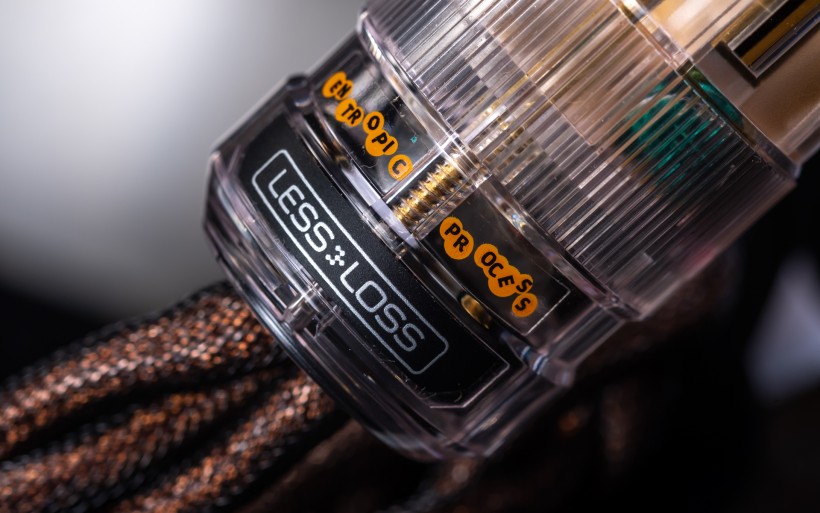 LessLoss C-MARC Prime/Classic/Classic Entropic Process/Stellar power cords start from $486/$1’148/$1’934/$2’450 respectively. These price tags specify which one is the entry-level, mid-tiered and upper-echelon specimen. The external differences largely do not. If anything, the Prime is the skinniest and the Classic is just a hair thinner than the Stellar. Then again, understated appearance is one of LessLoss’ trademarks. Their cables are all about ease of use, complex yet purposeful wiring geometry and several other means not many manufacturers pay attention to. In other words, these cords are for those shoppers who look beyond bling and are interested in audible results. The Stellar fits this profile. It is visually safe and represents the latest advancements in the C-MARC technology.
LessLoss C-MARC Prime/Classic/Classic Entropic Process/Stellar power cords start from $486/$1’148/$1’934/$2’450 respectively. These price tags specify which one is the entry-level, mid-tiered and upper-echelon specimen. The external differences largely do not. If anything, the Prime is the skinniest and the Classic is just a hair thinner than the Stellar. Then again, understated appearance is one of LessLoss’ trademarks. Their cables are all about ease of use, complex yet purposeful wiring geometry and several other means not many manufacturers pay attention to. In other words, these cords are for those shoppers who look beyond bling and are interested in audible results. The Stellar fits this profile. It is visually safe and represents the latest advancements in the C-MARC technology.
The Stellar’s larger conductive area in comparison to the Classic means two things. One, it lowers the impedance thus lessens the resistance for signal to flow. Two, the increased number of its conductive Litz wires in the C-MARC configuration means higher noise suppression. The more of these mutually superimposed oppositely polarized runs there are, the higher its efficacy. I was told that by increasing them the C-MARC design can scale up pretty much infinitely. This is also the key obstacle. Adding the extra wires significantly raises the complexity of the already elaborate cable which is no trifle to make. The Stellar’s core ingredient is thus the best that team LessLoss can currently manufacture. These Lithuanians are also particular about mechanical connections. 24K gold-plated hand-polished copper contacts in their IEC plugs clamp hard to lower contact resistance and prevent micro arcing. IeGO plug enclosures on both of the Stellar’s ends are translucent because, according to LessLoss, coloring or solidifying additives, such as glass fiber filler, impact performance. The IEC equipment plug also accommodates a large anti-vibration ring built upon laser-cut fins.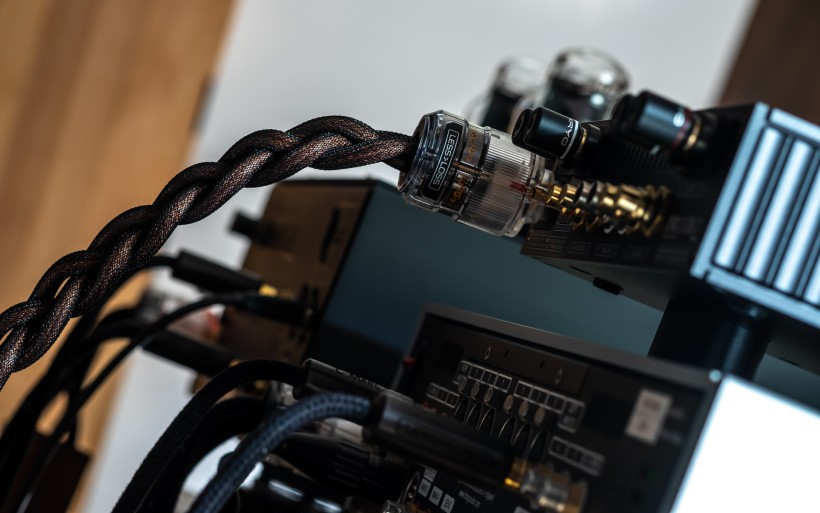 All copper parts inside the Stellar undergo the company’s proprietary Entropic Process, and for twice as long in comparison to the Classic. This procedure drastically ages a conductor material, so its internal structure changes and new properties are gained in the process; in-built directionality and far lesser susceptibility to micro-vibrations thus create resilience to noise. This ageing therapy essentially accelerates what several human lifetimes of constant burn-in would do to copper, which becomes so soft that it can easily deform. So for example, LessLoss Firewalls are encapsulated in hard curing crystal resin compartments to maintain their structural integrity. Enamel on each thin Litz wire does the same. We know about the Entropic Process that it most likely requires specific chemicals, equipment, environment and accuracy, but we are told it is not remotely achievable by regular burn-in devices, or cryo baths alone. LessLoss also uses cryogenic processing, but this is in addition to the Entropic Process, not a substitute. It also has to be executed at the earliest manufacturing stage there is, so non-Entropic C-MARCs can’t undergo it later on to then become Entropic products. Conductors subject to it aren’t free from burn-in. That still occurs, just at a much faster pace to net the effects of hundreds of years of normal use within mere weeks. Shrouded in mystery or not, to my ears this processing made a noticeable difference upon comparing the regular Classic to its Entropic equivalent. If the Stellar has twice of that applied, yes please.
All copper parts inside the Stellar undergo the company’s proprietary Entropic Process, and for twice as long in comparison to the Classic. This procedure drastically ages a conductor material, so its internal structure changes and new properties are gained in the process; in-built directionality and far lesser susceptibility to micro-vibrations thus create resilience to noise. This ageing therapy essentially accelerates what several human lifetimes of constant burn-in would do to copper, which becomes so soft that it can easily deform. So for example, LessLoss Firewalls are encapsulated in hard curing crystal resin compartments to maintain their structural integrity. Enamel on each thin Litz wire does the same. We know about the Entropic Process that it most likely requires specific chemicals, equipment, environment and accuracy, but we are told it is not remotely achievable by regular burn-in devices, or cryo baths alone. LessLoss also uses cryogenic processing, but this is in addition to the Entropic Process, not a substitute. It also has to be executed at the earliest manufacturing stage there is, so non-Entropic C-MARCs can’t undergo it later on to then become Entropic products. Conductors subject to it aren’t free from burn-in. That still occurs, just at a much faster pace to net the effects of hundreds of years of normal use within mere weeks. Shrouded in mystery or not, to my ears this processing made a noticeable difference upon comparing the regular Classic to its Entropic equivalent. If the Stellar has twice of that applied, yes please.
Prior to receiving any LessLoss cables I’m always asked how many I need to do my part. The question about their respective lengths follows shortly after. There’s not much space behind my rack, so I truly appreciate such thoughtfulness when power cords are on the menu. Their breed can get very bulky and cumbersome to use. LessLoss C-MARCs are fairly thin, pliable and easy to route, so the refreshingly opposite good stuff. Since all the spots between the wall outlet and my audio system are already taken with various power C-MARCs, I’m more than familiar with the technology they embed. That’s why going the full hog with the Stellar newcomer wasn’t necessary. Two leashes of 1.0 and 1.5m lengths sufficed. Realistically speaking, a single unit wouldn’t have been a deal breaker either.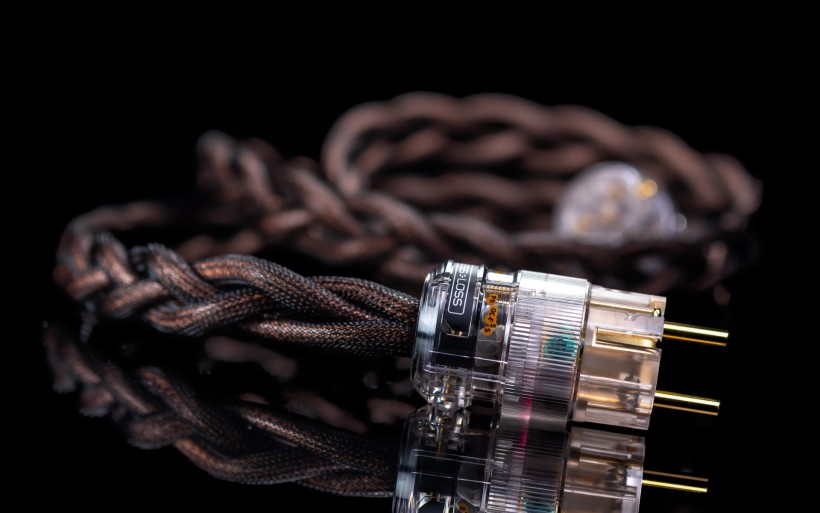 In my experience, power cords can work wonders particularly for digital hardware. One, it’s apparently more sensitive to mechanical resonances and incoming noise than say an amp. Two, a signal created in a digital source is the base for all downstream products to work on. Three, our speakers or headphones will inevitably communicate how good this original signal really is. Team LessLoss sees the power cord between the power conditioner/distributor and DAC as the most important one. My system communicates this very well, so I can only agree. The second most potent cable therein bridges the wall socket with my power distributor. Then follow cables which go from this box to my preamp, streamer, mono amps and lastly a linear PSU as the one that benefits the least from a power cord’s assistance. This platform overview tells where exactly the two Stellars sent my way were destined to work, and against which sparring partners.
In my experience, power cords can work wonders particularly for digital hardware. One, it’s apparently more sensitive to mechanical resonances and incoming noise than say an amp. Two, a signal created in a digital source is the base for all downstream products to work on. Three, our speakers or headphones will inevitably communicate how good this original signal really is. Team LessLoss sees the power cord between the power conditioner/distributor and DAC as the most important one. My system communicates this very well, so I can only agree. The second most potent cable therein bridges the wall socket with my power distributor. Then follow cables which go from this box to my preamp, streamer, mono amps and lastly a linear PSU as the one that benefits the least from a power cord’s assistance. This platform overview tells where exactly the two Stellars sent my way were destined to work, and against which sparring partners.
My system is quite unusual as far as its power front goes. The C-MARC Classic Entropic goes from the wall outlet to the LessLoss power distributor, one of whose outlets sees Boenicke Audio Power Gate’s primary M2 captive cord, while the remaining three neighboring heads go into my DAC, streamer and preamp. Should you wonder about the logic behind using two power distributors in series, the efficacy of the LessLoss Firewall modules inside both these units compounds and outgrows potential losses on the extra cables and mechanical connections involved. Had I two or three more Firewalled distributors, for this specific reason I would chain them as well. I’m aware that this route may seem a touch extreme. Then again, my system doesn’t say nay to additional Firewalls just yet and it rocks about 16 already. LessLoss’s founder Louis Motek explained that in the past they did tests with several dozens of these advanced cleansers used at once with excellent results, but I digress.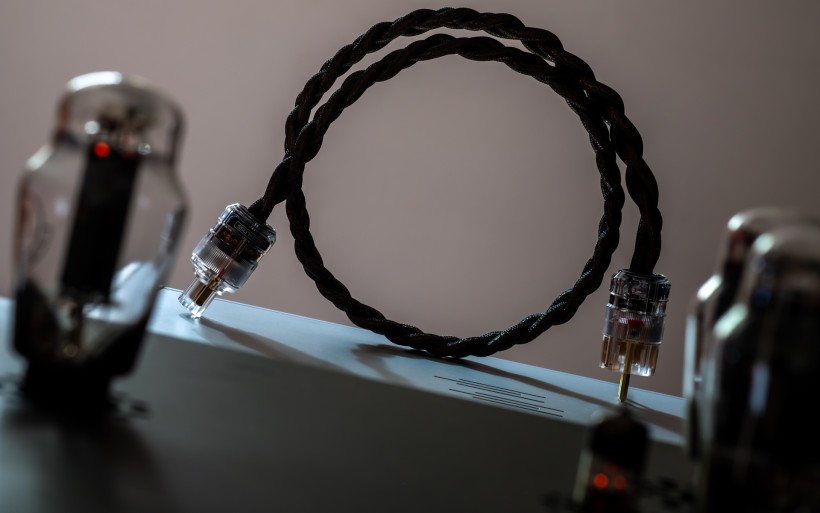 Considering the above, the 1.5m C-MARC Stellar went against the PowerGate’s secondary M2 cord that daily sees my DAC’s power inlet. More importantly, this captive type is based on the older non-entropic C-MARC conductor, so the brawl ahead remained in the family by default. Ditto the second round, during which the Stellar newcomer compared to its standalone entropic-processed C-MARC Classic sibling also on my DAC. Then the shorter C-MARC Stellar replaced the other Classic near the wall outlet, just because I could and was curious. It should be said that I don’t use power cables not made by LessLoss, guilty as charged. I just don’t see the point. To file for a divorce with this outfit, first I’d have to have something significantly better on my radar. Truth be told I have, but it sells for kidneys. I have only two and am quite attached to them, so no dice. Other than this, being faithful to the LessLoss loom packed a major private boon during this review. Three generations of the same product at my disposal allowed for tracking changes made over a significant time period in the company’s history.
Considering the above, the 1.5m C-MARC Stellar went against the PowerGate’s secondary M2 cord that daily sees my DAC’s power inlet. More importantly, this captive type is based on the older non-entropic C-MARC conductor, so the brawl ahead remained in the family by default. Ditto the second round, during which the Stellar newcomer compared to its standalone entropic-processed C-MARC Classic sibling also on my DAC. Then the shorter C-MARC Stellar replaced the other Classic near the wall outlet, just because I could and was curious. It should be said that I don’t use power cables not made by LessLoss, guilty as charged. I just don’t see the point. To file for a divorce with this outfit, first I’d have to have something significantly better on my radar. Truth be told I have, but it sells for kidneys. I have only two and am quite attached to them, so no dice. Other than this, being faithful to the LessLoss loom packed a major private boon during this review. Three generations of the same product at my disposal allowed for tracking changes made over a significant time period in the company’s history.
The LessLoss credo is straightforward and this translates directly into the design. This manufacturer is all about trimming as much high-frequency noise as possible and improving sound quality that way, without at the same time introducing coloration. This noble policy is backed by the in-house developed technology that keeps on getting more and more refined and efficient. Over the years these Lithuanians have found ways to successfully apply it in the audio system’s various junctures. This essentially means one thing. If you know and like one LessLoss cable for what it does, its siblings will feel enjoyably familiar and as likeable, which largely explains my personal fondness for this stuff. It’s safe and predictable where it matters, and it also elevates my system without changing its core flavor. That’s really useful from my perspective. The Stellar didn’t alter this status quo either. It couldn’t. It’s a LessLoss after all. But is it any better than the already very good Classic? This is the most important question to ask today.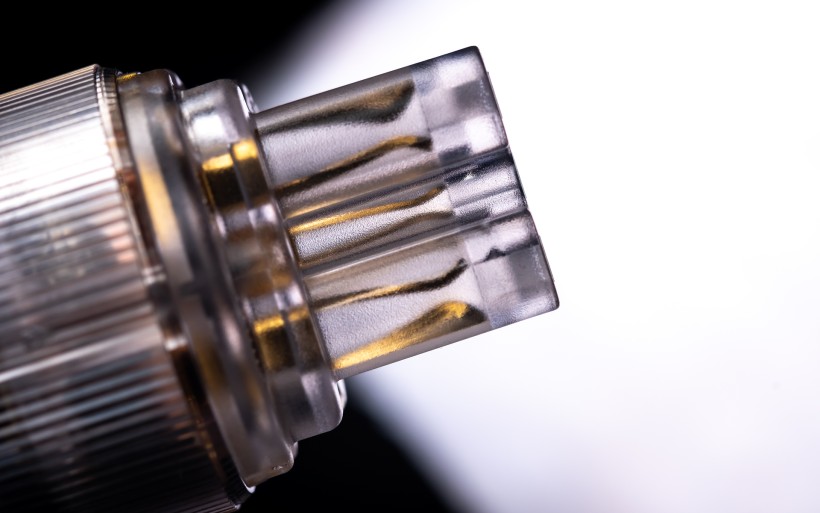 Let’s try addressing this matter one step at a time and from basics. The C-MARC on-site subsection tells us that this cable family increases background cleanliness, resolution, focus, accuracy, dynamics and transients, and it also secures neutral timbre. If this glossary resembles randomly picked safe audiophile terms all thrown into one bag, it’s not. The manufacturer’s C-MARC description is consequential. High-frequency noise isn’t a mere background buzz we hear on speakers. It manifests itself as audible sluggishness, strong coloration, shaky bass, bloated spatial outlines, harshness, brittleness, pointiness, artificial textures and subsequently their poor pigmentation. Listening fatigue follows and so does sound that largely feels off. The sensation is comparable to auditioning a tubed system for the first time after several weeks of break. When these unpleasant effects are reduced to a point when they’re no longer bothersome, the asset list as above is what’s left. To simplify, noise masks details in music and its tangible organic character. Remove the culprit and presto, higher informational content, prettiness and vivaciousness resurface to positively influence the entire perspective. These seemingly mutually exclusive things can really go hand in hand. It just takes a specialist technology to achieve this.
Let’s try addressing this matter one step at a time and from basics. The C-MARC on-site subsection tells us that this cable family increases background cleanliness, resolution, focus, accuracy, dynamics and transients, and it also secures neutral timbre. If this glossary resembles randomly picked safe audiophile terms all thrown into one bag, it’s not. The manufacturer’s C-MARC description is consequential. High-frequency noise isn’t a mere background buzz we hear on speakers. It manifests itself as audible sluggishness, strong coloration, shaky bass, bloated spatial outlines, harshness, brittleness, pointiness, artificial textures and subsequently their poor pigmentation. Listening fatigue follows and so does sound that largely feels off. The sensation is comparable to auditioning a tubed system for the first time after several weeks of break. When these unpleasant effects are reduced to a point when they’re no longer bothersome, the asset list as above is what’s left. To simplify, noise masks details in music and its tangible organic character. Remove the culprit and presto, higher informational content, prettiness and vivaciousness resurface to positively influence the entire perspective. These seemingly mutually exclusive things can really go hand in hand. It just takes a specialist technology to achieve this.
Most cables I sampled over the years were groomed either for traits associated with mellowness, softness and warmth, or speed, openness and imaging precision. In this context the LessLoss offering is roughly in the middle, with a gentle nod towards the first asset group. These Lithuanian cables are terrific grit removers and tone injectors, so they are really spot on for systems geared predominantly for high agility, lucidity, radiance, oxygenation, dynamics and outline specificity, but delivered at a cost of moderate textural fill and stiff suspension that prevents bloom and steals heft. Conversely, setups primed for color, juiciness, gravity, calmness, thick spatial cues, dim atmosphere and intimacy will have these features further reinforced with LessLoss. Then it’s up to our ears to decide whether that’s too much of the same or not. For what it’s worth, at my listening room I haven’t yet heard a hardware combination that’d clearly dislike these cables. Their high-tiered detail extraction skills atop all else they do are the very reason. There’s more to this, though. My mono amps are in a way thick, calm and organic. My speakers and DAC are the opposite. My preamp and streamer are somewhere in between. It’s all about balance. Once that is secured, personal comfort follows and the urge for changing hardware and pursuing the next best thing disappears.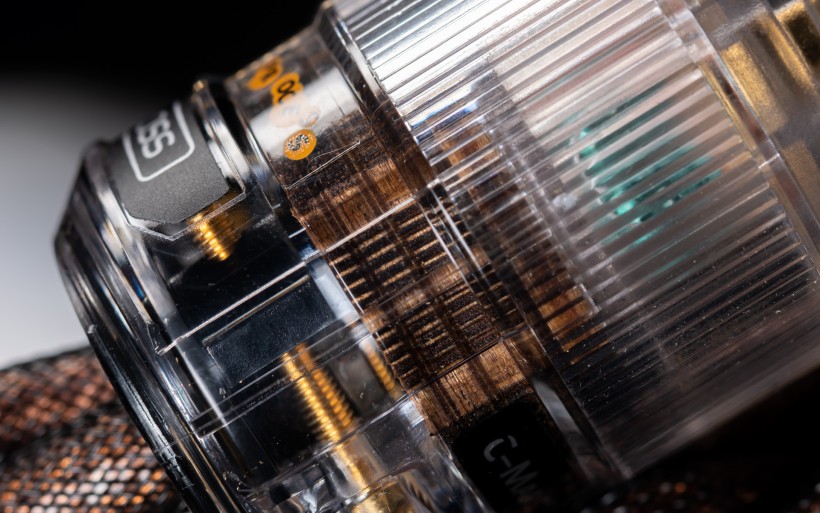 My system’s overall profile didn’t change at all no matter whether I’ve used the Stellar, Classic Entropic Process, or their captive Classic sibling disguised under the Boenicke banner. It wasn’t supposed to. The newcomer LessLoss wasn’t designed to reinvent this wheel, but to make it closer to the circular reference that makes smoother and easier turns. Against the captive cord the Stellar was sensibly springier and juicier. It also produced bass that struck me as somewhat lighter on bloom yet lower on reach, so it felt more elastic, tighter, impactful and controlling in the process. I never considered Sven’s M2 power cables by any means coarse or sharp. In the grand scheme they’re anything but. The Stellar’s presence however showed how much more saturated, vivid and enjoyable individual colors and tones could still manage to get.
My system’s overall profile didn’t change at all no matter whether I’ve used the Stellar, Classic Entropic Process, or their captive Classic sibling disguised under the Boenicke banner. It wasn’t supposed to. The newcomer LessLoss wasn’t designed to reinvent this wheel, but to make it closer to the circular reference that makes smoother and easier turns. Against the captive cord the Stellar was sensibly springier and juicier. It also produced bass that struck me as somewhat lighter on bloom yet lower on reach, so it felt more elastic, tighter, impactful and controlling in the process. I never considered Sven’s M2 power cables by any means coarse or sharp. In the grand scheme they’re anything but. The Stellar’s presence however showed how much more saturated, vivid and enjoyable individual colors and tones could still manage to get.
This change was apparent particularly on tracks built upon a single vocal line precisely isolated from the backdrop and assisted by just one or two instruments. Think Lianne La Havas’ acoustic version of the track “Forget”, or “Hurt” covered by the late Johnny Cash. On such jobs the Boenicke cable acts without hiccups. The Stellar’s take on the same vocal outline was less surgical due to the higher pigment provision to its internal filler, yet as precise and articulated. Voices felt less like a part etched into the landscape, and more like breathing, moist, sensual, intimately close beings presented here. In one of his reviews Srajan had used the word suchness as a mix of tacitness, presence and intimacy. I think that it brilliantly communicates the key disparity between the Stellar and its Boenicke kin. The former scored noticeably higher on that particular front, while its noticeably better performance on bass and backdrop cleanliness sealed the deal. When the C-MARC Classic Entropic Process entered the arena, the gap between this cord and Stellar somewhat narrowed, but all the above differences registered. More importantly, they were traceable easily enough to remain outside the subtle realm. With this in mind, today’s entire article could in fact encapsulate into this one sentence: on sheer performance the Stellar is the best LessLoss cable to date, and by a meaningful margin. To my ears it just is, even in the context of its already highly accomplished predecessor. On my DAC it did brilliantly enough to consider it a noticeable upgrade. These impressions also replicated upon using the second Stellar on the first stop in my power line. That also moved the performance needle, just not as much as it was the case powering the LampizatOr directly.
When the C-MARC Classic Entropic Process entered the arena, the gap between this cord and Stellar somewhat narrowed, but all the above differences registered. More importantly, they were traceable easily enough to remain outside the subtle realm. With this in mind, today’s entire article could in fact encapsulate into this one sentence: on sheer performance the Stellar is the best LessLoss cable to date, and by a meaningful margin. To my ears it just is, even in the context of its already highly accomplished predecessor. On my DAC it did brilliantly enough to consider it a noticeable upgrade. These impressions also replicated upon using the second Stellar on the first stop in my power line. That also moved the performance needle, just not as much as it was the case powering the LampizatOr directly.
For the sake of contrast, if on the efficacy scale the M2 captives sit at “one,” and Stellar is at “ten,” then I’d position C-MARC Classic Entropic Process at around “four” or so. This means that, to my ears at least, the gap between the Classic Entropic Process and Boenicke turned out smaller than the one between the former and today’s subject. The newcomer isn’t affordable by any stretch and clearly tailored for tuned upper-echelon systems and deep wallets. LessLoss Prime and Classic sell for way less and largely behave in the same audibly fluid manner. As far as their roster goes however, the C-MARC Stellar represents significant progress, which makes the audio system’s wheels turn commensurably smoother and easier indeed. That’s the most important takeaway for today.
Associated Equipment:
- Amplifier: Trilogy 995R, FirstWatt F7, Enleum AMP-23R
- DAC: LampizatOr Pacific (KR Audio T-100 / Living Voice 300B + KR Audio 5U4G Ltd. Ed.)
- Speakers: Boenicke Audio W11 SE+, sound|kaos Vox 3afw
- Transport: Innuos Statement, fidata HFAS1-S10U
- Preamplifier: Trilogy 915R, Thöress DFP
- Speaker cables: Boenicke Audio S3, LessLoss C-MARC
- Headphones: HifiMan Susvara
- Speaker signal conditioning: LessLoss Firewall for Loudspeakers, Boenicke ComDev
- Anti-vibration conditioning: 6x Carbide Base Diamond (under speakers), 6x Carbide Base Micro Diamond with TwinDamp inserts and spikes (under DAC and pre)
- Interconnects: LessLoss Entropic Process C-MARC, Boenicke Audio IC3 CG
- Power components: Gigawatt PC-3 SE EVO+/LC-3 EVO, LessLoss C-MARC, LessLoss Entropic Process C-MARC, Boenicke Audio Power Gate, ISOL-8 Prometheus
- USB components: iFi audio Mercury3.0
- Rack: Franc Audio Accesories Wood Block Rack 1+3
- Network: Fidelizer EtherStream, Linksys WRT160N
- Music: NativeDSD
Retail prices of reviewed components in EU (excl. VAT):
- LessLoss C-MARC Stellar (2.0m): $2’450
- Each 0.5m extra: +$112
Manufacturer: LessLoss


